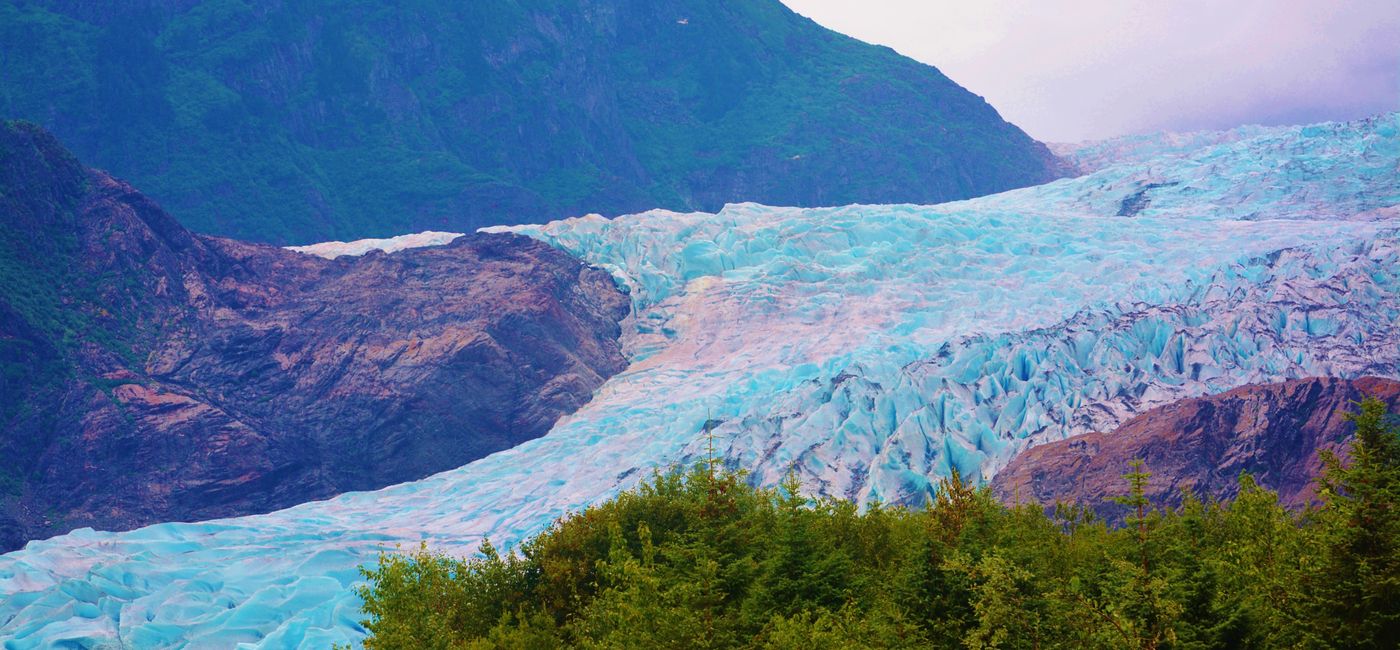As Juneau’s Iconic Glacier Recedes, the Tourism Industry Contemplates Its Future

As global warming becomes an increasingly threatening and life altering problem the world over, popular tourist destinations are pondering their future.
Among them, Alaska’s popular city of Juneau, where the Mendenhall Glacier has long been—and continues to be—a major attraction for visitors.
The glacier, however, is receding so quickly that experts estimate it may no longer be visible from the area’s visitor center by 2050.
A new story from the Associated Press says that reality has prompted concern in Juneau about the future.
“We need to be thinking about our glaciers and the ability to view glaciers as they recede,” Alexandra Pierce, the city’s tourism manager, told AP. There also needs to be a focus on reducing environmental impacts, she said. “People come to Alaska to see what they consider to be a pristine environment and it’s our responsibility to preserve that for residents and visitors.”
The face of the iconic glacier retreated a staggering eight football fields between 2007 and 2021, according to estimates from University of Alaska Southeast researchers. There are now trail markers in place at the glacier, showing where ice once used to be located.
Most of the glacier’s loss has come from thinning amid global warming, according to the Associated Press. The Mendenhall glacier has nearly entirely receded from the lake that shares its name, the publication reported.
The changes may also impact the areas ecosystem and its salmon, which scientists are now working to fully understand.
It will take about one century for the glacier to fully disappear, according to the AP report. In the glacier’s absence, tourists may still be attracted by a majestic waterfall in the area, as well as the black bear population and salmon runs. But locals say the glacier is the biggest draw.
